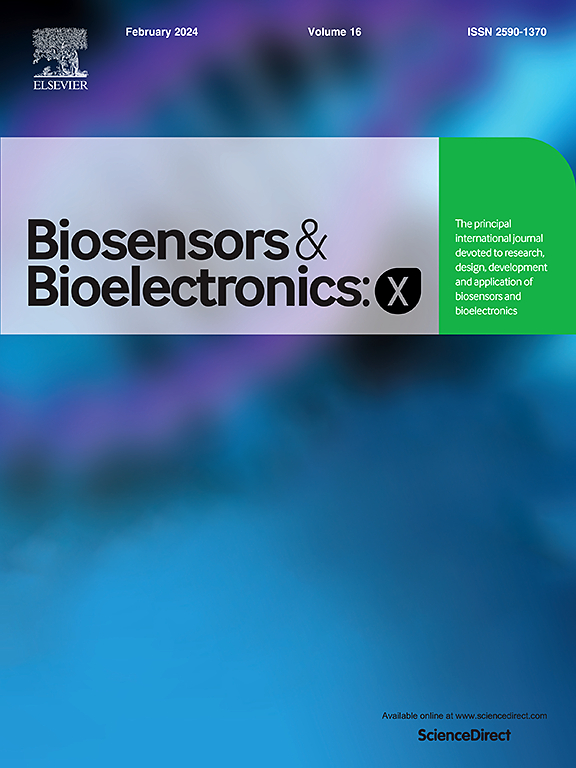Performance of label-free biosensors as a function of layer thickness
IF 10.61
Q3 Biochemistry, Genetics and Molecular Biology
引用次数: 0
Abstract
Biosensors are used in various applications in the field of medicine, environmental monitoring, and chemical processing to study the concentration and quality of target molecules. Biosensors convert the interaction between a specific target molecule and a recognition element into a measurable signal. We compared the performance of four different label-free biosensor techniques (multi-parametric surface plasmon resonance (MP-SPR), quartz crystal microbalance (QCM), mass-sensitive micro array (MSMA, or also known as film bulk acoustic resonators (FBARs)) and biolayer interferometry (BLI)) to evaluate how well they can quantify thick protein layers. We utilized the avidin-biotin system, which enables tight and specific binding and allowed us to assemble layers of proteins on the biosensor surface in a well-defined and reproducible fashion. Our results show that MP-SPR outperforms the other label-free biosensors in analyzing thick samples, showing a predictable and sensitive binding signal for over 50 albumin – avidin layers, which is estimated to correspond to a 300–400 nm thick protein layer. The linear measurement range of BLI was 38 layers corresponding to a 228–304 nm thick surface on the biosensor while QCM and MSMA were able to measure 108–144 nm and 72–96 nm thick protein layers with a fairly linear response, respectively.
无标记生物传感器的性能与层厚度的关系
生物传感器广泛应用于医学、环境监测和化学处理领域,用于研究目标分子的浓度和质量。生物传感器将特定目标分子与识别元件之间的相互作用转化为可测量的信号。我们比较了四种不同的无标记生物传感器技术(多参数表面等离子体共振 (MP-SPR)、石英晶体微天平 (QCM)、质量敏感微阵列 (MSMA,又称薄膜体声谐振器 (FBAR))和生物层干涉测量法 (BLI))的性能,以评估它们对厚蛋白质层的定量效果。我们使用了阿维丁-生物素系统,该系统可实现紧密而特异的结合,使我们能够以定义明确且可重复的方式在生物传感器表面组装蛋白质层。我们的研究结果表明,MP-SPR 在分析厚样品时优于其他无标记生物传感器,在超过 50 层白蛋白-鸟苷层(估计相当于 300-400 纳米厚的蛋白质层)上显示出可预测的灵敏结合信号。BLI 的线性测量范围为 38 层,相当于生物传感器上 228-304 纳米厚的表面,而 QCM 和 MSMA 能够分别测量 108-144 纳米和 72-96 纳米厚的蛋白质层,且反应相当线性。
本文章由计算机程序翻译,如有差异,请以英文原文为准。
求助全文
约1分钟内获得全文
求助全文
来源期刊

Biosensors and Bioelectronics: X
Biochemistry, Genetics and Molecular Biology-Biophysics
CiteScore
4.60
自引率
0.00%
发文量
166
审稿时长
54 days
期刊介绍:
Biosensors and Bioelectronics: X, an open-access companion journal of Biosensors and Bioelectronics, boasts a 2020 Impact Factor of 10.61 (Journal Citation Reports, Clarivate Analytics 2021). Offering authors the opportunity to share their innovative work freely and globally, Biosensors and Bioelectronics: X aims to be a timely and permanent source of information. The journal publishes original research papers, review articles, communications, editorial highlights, perspectives, opinions, and commentaries at the intersection of technological advancements and high-impact applications. Manuscripts submitted to Biosensors and Bioelectronics: X are assessed based on originality and innovation in technology development or applications, aligning with the journal's goal to cater to a broad audience interested in this dynamic field.
 求助内容:
求助内容: 应助结果提醒方式:
应助结果提醒方式:


